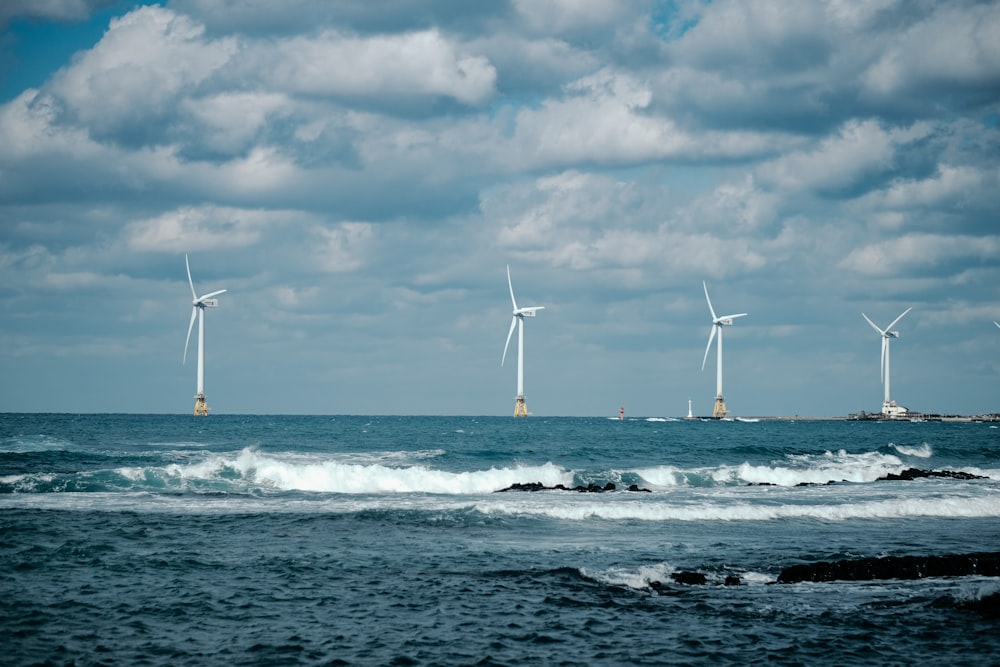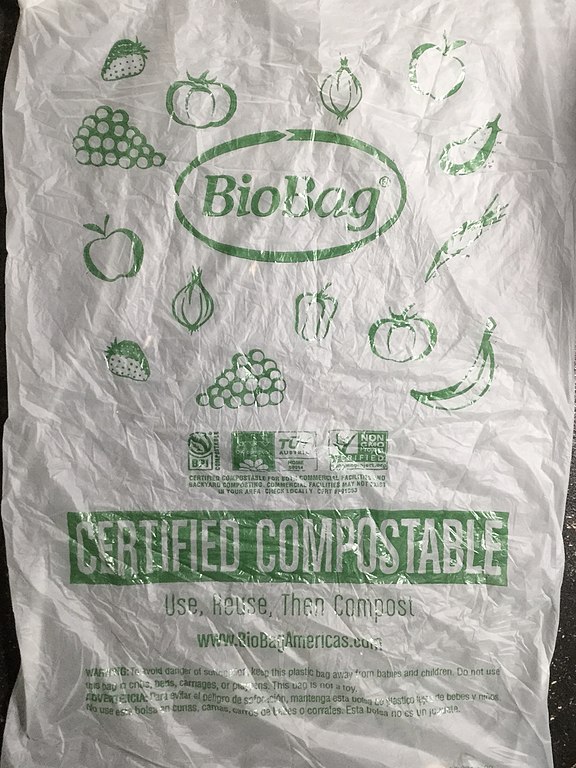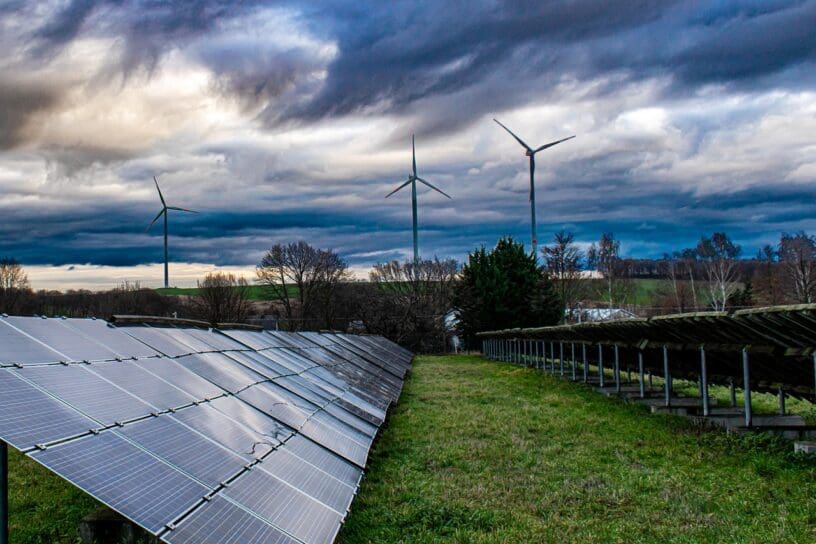Green Innovations: 20 Sustainable Technologies Shaping the Future
Sustainable green technologies such as solar, wind, and hydro power; eco-friendly construction materials; electric vehicles; and energy-efficient appliances have huge potential to make a positive impact. Transitioning to these technologies is crucial to combating climate change while supporting economic growth and jobs. In this article, I will highlight groundbreaking technologies that give me hope for the future of our planet.
From electric vehicles and solar batteries to lab-grown meat and buildings made of recycled materials, scientists are finding creative ways to reduce our environmental impact. The goal of this piece is to educate you on the promising sustainable technologies. Although climate challenges remain, these innovations demonstrate important progress in developing eco-friendly infrastructure, transportation, food systems and more.
Implementing these types of fresh ideas is key to promoting environmental health and responsible growth for future generations. Although there are upfront costs, the long-term financial and environmental payoffs are enormous. Plus, continual innovation is driving down prices of green tech over time. Here are the 20 sustainable technologies shaping the future.
1. Harnessing Solar Energy

Photo by American Public Power Association on Unsplash
Advances in high-efficiency photovoltaic cells and solar batteries allow us to capture sunlight more effectively. Modern solar batteries store surplus energy for use during nighttime or power outages. Researchers are developing more efficient solar panels that can convert over 40% of sunlight into electricity, compared to 15-20% efficiency for older panels. New solar battery technologies like lithium-ion can store hundreds of kilowatt-hours of energy.
Solar power could realistically provide 20% or more of global energy needs within the next few decades if adoption continues at the current pace. Government incentives and falling prices are making rooftop solar installations more affordable and widespread. Utility-scale solar farms are also seeing massive growth as costs plunge.
2. Wind Power

Photo by insung yoon on Unsplash
Leverage the force of the wind to generate clean, renewable electricity. Wind turbines are becoming a key player in cleaner energy solutions as output has doubled within the last decade. Offshore wind farms are gaining popularity with steady wind speeds and availability of space compared to onshore locations. Floating wind turbines allow accessing stronger and more consistent winds further offshore.
Advances in blade design, height, and materials are also contributing to efficiency gains allowing more electricity generation from the same wind speeds. Wind could provide up to 35% of global electricity by 2050 according to estimates from the Global Wind Energy Council.
3. Hydroelectric Power

Photo by Dr Purna Sreeramaneni on Unsplash
Utilizing the power of flowing water to generate emissions-free renewable electricity through hydropower plants. Hydropower is already one of the largest renewable energy sources globally, providing around 16% of world electricity. Pumped storage plants can further improve efficiency by pumping water uphill to store energy for peak usage periods.
Upgrades at existing facilities like more advanced turbines allow producing more electricity without requiring more water. Developing countries still have substantial potential for new hydropower projects to expand renewable energy access off-grid. Hydropower’s established infrastructure and storage capabilities make it a vital player in adding cleaner energy to national grids.
4. Energy-Efficient Buildings

Jon Kristinsson – uploaded by the request of author, CC BY-SA 4.0, via Wikimedia Commons
Incorporating smart design, superior insulation, high-efficiency appliances, and automated systems to greatly reduce energy consumption in homes and commercial buildings. Passive heating and cooling techniques can minimize the need for HVAC systems. Airtight construction and high insulation ratings are crucial to prevent heat transfer through envelopes.
Energy-efficient buildings could realistically achieve 70-90% reductions in heating/cooling costs. With buildings accounting for over 70% of electricity usage in developed countries, efficiency improvements represent a major opportunity to curb emissions while saving money.
5. Green Construction Materials
Sustainable construction materials like bamboo, recycled steel, reclaimed wood, and other eco-friendly alternatives minimize environmental impact. These green materials have much lower carbon footprints by reusing waste resources rather than extracting and processing raw materials.
They often require less energy to manufacture while providing durability comparable to traditional building materials. As green materials see higher adoption rates globally, they benefit from economies of scale to become more cost-competitive with mainstream options. Governments are also providing incentives and funding for using recycled materials in infrastructure projects.
6. Vertical Farming

Image by BrightAgrotech from Pixabay
Growing crops in vertically stacked layers makes extremely efficient use of farming space, conserving land and water resources while increasing yields through optimized growth conditions. Vertical farms can achieve yields over 10 times higher than traditional techniques. LED lighting reduces electricity consumption by 40% compared to fluorescent lighting.
Hydroponic and aeroponic techniques further minimise water usage up to 70% less than conventional farming. Automated monitoring and precise control of nutrients, light, humidity optimises plant development and flavour. The potential environmental benefits are immense as vertical farming can dramatically reduce land, water, and resource usage to feed the planet’s growing population.
7. Electric Vehicles (EVs)

Image by Marilyn Murphy from Pixabay
EVs reduce emissions and dependence on gasoline/diesel vehicles. Advances in battery technology are making EVs more practical through increased range and faster charging. Many newer models now achieve over 300 miles per charge. Improved lithium-ion battery chemistry also enhances safety, lifetime, and power delivery while reducing manufacturing emissions.
Charging infrastructure is rapidly expanding globally with over 1 million public charging points expected by 2024. Bloomberg forecasts EVs will reach price parity upfront and dominate new car sales worldwide by 2030. With renewable energy traction, EVs play a major role in reducing transportation emissions and improving air quality.
8. Smart Power Grids
Smart grids utilize interconnected networks and advanced meters to optimize electricity distribution. They leverage two-way communication between utilities and consumers to track usage in real-time. This allows for dynamic balancing of supply and demand, outage detection, and integration of renewable energy.
Smart grids reduce peak load strain on the grid through consumer participation, save energy by quickly identifying equipment failures, reduce operations and management costs for utilities, and allow consumers to track energy usage and manage costs. Moving forward, machine learning algorithms and edge computing will enable smarter management.
9. Biofuels

Florante A. Cruz, CC BY-SA 4.0, via Wikimedia Commons
Biofuels are renewable energy derived from organic material that can substitute for fossil fuels like gasoline and diesel. Many biofuels come from food crops like corn and soybeans, but there are concerns that using crops for fuel drives up food prices. Advanced biofuels from non-food sources like perennial grasses or various waste materials are gaining traction.
Algae is also being researched as it can be cultivated in areas unsuitable for agriculture and can generated 10-100 times more fuel per acre than conventional crops. Biofuels burn cleaner than petroleum-based fuels and utilize existing engines and infrastructure. As technology improves, advanced biofuels could provide scalable, affordable clean energy with smaller environmental impacts.
10. Wave and Tidal Energy

Image by Radovan Zierik from Pixabay
Wave and tidal energy leverages the immense latent power in ocean waves and tides. Various techniques capture kinetic energy as waves rise and fall or water currents flow in and out. Tidal barrage systems trap tidal waters behind dams, running electricity as tides turn turbines. Tidal stream generators sit on the seafloor, spinning as currents move their foils.
Wave energy converters bob or pivot on waves nearshore, transmitting mechanical power to generators. These technologies offer predictable, renewable electricity but have impacts on marine life. With capacity factors above 25%, they can provide continuous base load power to supplement solar and wind. Further Research and Development is driving down costs through economies of scale and improved durability for saltwater operation.
11. Geothermal Energy

Image by WikiImages from Pixabay
Tapping into Earth’s internal heat for clean power generation. Geothermal energy harnesses heat from under the earth’s surface to generate sustainable electricity and provide heating and cooling. As an abundant renewable resource, geothermal offers a reliable alternative to fossil fuels. Power plants use hot water or steam from geothermal reservoirs to turn turbines and generate electricity. Geothermal heating/cooling relies on the stable temperatures near the surface to control building temperatures.
As a clean energy, geothermal produces minimal emissions and has a small environmental footprint compared to conventional energy sources. With advances in drilling and heat extraction technologies, geothermal capacity is growing globally and has the potential to meet up to 3.5% of worldwide electricity demand by 2050.
12. Eco-Friendly Transportation
From electric buses to bike-sharing programs, sustainable mobility options are on the rise. Transportation accounts for nearly 30% of U.S. greenhouse gas emissions, making it crucial to adopt alternative eco-friendly transit. Electric vehicles, whether for public use or personal ownership, eliminate direct carbon emissions and air pollutants. Shared micromobility services like electric bikes and scooters increase efficiency and cut down on single-occupancy trips.
Hybrid vehicles, biofuels, and hydrogen fuel cells present additional ways to reduce dependence on fossil fuels. Sustainable transportation infrastructure prioritizes walking, cycling and public transit over private automobiles. Smart city planning and vehicle-to-grid integration will facilitate continued growth in green mobility.
13. Waste-to-Energy

Losch, CC BY-SA 3.0, via Wikimedia Commons
Converting waste materials into usable energy through incineration or other processes. Waste-to-energy setups provide an avenue for municipal solid waste management while recovering value from what would otherwise head to landfills. Thermal treatment plants directly incinerate waste and use the heat to drive turbines. Anaerobic digestion utilizes microbes to break down organic matter and produce biogas for electricity or heating.
Other technologies like pyrolysis and gasification offer ways to convert waste into fuel. Despite concerns of emissions, state-of-the-art waste-to-energy facilities mitigate environmental impact through strict regulations and emissions control systems. With proper NIMBY considerations, waste-to-energy capacity is projected to expand to help address growing waste generation worldwide.
14. Smart Water Management
Internet of Things (IoT)-based systems monitor water usage, detect leaks, and promote conservation. Smart water technologies leverage real-time data and connectivity to efficiently manage urban water infrastructure. Sensor networks identify issues instantly, while data analytics inform predictive maintenance and dynamic pricing policies. Cloud-based leak detectors remotely monitor flow fluctuations and prompt service calls to prevent wasting water.
Smart irrigation controllers and other end-user products limit excess usage based on weather patterns and other variables. As climate change strains water availability, intelligent management systems curb demand and safeguard reserves. With 30% of water lost to leakage, smart networks present a major opportunity to drive resilience and savings.
15. Biodegradable Plastics

Geo Lightspeed7, CC BY-SA 4.0, via Wikimedia Commons
Plastics made from plant-based materials like corn and sugarcane offer an environmentally friendlier alternative to traditional petroleum-based plastics. These biodegradable plastics break down much faster in landfills or compost piles, reducing plastic waste accumulation. Some common applications include food packaging, bags, containers, utensils, and more.
Continued innovation around bioplastic materials aims to improve properties like durability and heat resistance to expand possible uses. Widespread adoption of biodegradable plastics could significantly reduce the environmental impacts of plastic pollution.
16. Carbon Capture and Storage (CCS)
Carbon capture and storage (CCS) offers a technological solution for reducing atmospheric greenhouse gas emissions from major stationary sources like power plants and industrial facilities. The process involves trapping carbon dioxide emissions before they are released into the air and transporting them via pipeline to underground geological formations for safe, permanent storage.
Widespread deployment of CCS, paired with emissions reductions in other sectors, plays a critical role in most climate change mitigation scenarios. Realizing the technology’s full potential requires surmounting challenges around high costs, infrastructure needs, storage site availability, and more.
17. Green Roofs
Installing vegetation on rooftops, known as green roofs, provides sustainability benefits for buildings and the surrounding environment. Layers of soil and hardy plants on roofs improve insulation, absorbing heat in summer and retaining warmth in winter to reduce energy needed for cooling and heating. Green roofs mitigate the urban heat island effect and can reduce surrounding air temperatures.
They also retain a significant portion of rainfall, attenuating stormwater runoff. This helps reduce flooding risk and the burden on water treatment facilities. Native plants used on green roofs create biodiverse habitats to support birds, butterflies and beneficial insects.
18. Ocean Cleanup Technologies

Image by Yogendra Singh from Pixabay
Vast amounts of plastic waste end up in oceans, accumulating in gyres and impacting marine ecosystems. Innovative technologies offer solutions for removing this pollution. Ideas like floating debris-catching booms guided by satellites, solar-powered collection vessels, and autonomous plastic-grabbing drones aim to efficiently extract plastic from water bodies.
Effective cleanup requires capturing microplastics and larger debris across vast, remote expanses of oceans. Addressing plastic waste at the source through reduced usage, alternative materials, improved recycling and better waste management can prevent more debris from entering earth’s waters. Combining preventative and cleanup approaches is key to restoring ocean health.
19. Circular Economy
The conventional linear economy follows a produce, use, discard model, depleting natural resources and producing massive waste. The circular economy aims to eliminate waste by design through reuse, repair, refurbishment and recycling. It emphasizes resource efficiency at all stages of a product’s lifecycle – from design to end-of-life management. Following biological cycles, it aims for zero waste through composting materials to regenerate the biosphere.
Durability, modular design for disassembly, utilizing renewable inputs, and incentives for product return all support increased cycling of resources to achieve sustainability. Realizing a closed-loop system demands innovation across manufacturing, new business models and consumption habits aligned to circular values.
20. Smart Appliances
Home appliances like refrigerators, washing machines and air conditioners account for significant household energy use. Smart appliances help manage consumption more efficiently through beneficial technologies and connectivity. Features like sensors and automatic power-off conserve electricity when not in use. Diagnostics monitor performance to optimize settings and maintenance. Connectivity allows remote control via apps and virtual assistance to match usage more closely to needs.
Integration of renewables further diminishes environmental impact. Smart grid connectivity enables shifting high demand tasks to off-peak renewable energy production periods. As appliances become key energy flexibility assets, promising pathways exist to utilize their advanced capabilities for supporting grid stability.
As we reach the end of this tour of groundbreaking sustainable technologies, I hope you feel as inspired as we do about the future. Though we face profound environmental challenges, the human capacity for ingenious green innovation knows no bounds. From nano-tech solar panels to CO2-absorbing concrete, the solutions showcased here leverage science fiction-like ideas to create real-world impact. By supporting these innovators on the cutting edge, we can spread the planet-saving ideas. The future remains unwritten, and shaping a sustainable tomorrow falls to those unafraid to dream bigger.
Planning a trip to Paris ? Get ready !
These are Amazon’s best-selling travel products that you may need for coming to Paris.
Bookstore
- The best travel book : Rick Steves – Paris 2023 – Learn more here
- Fodor’s Paris 2024 – Learn more here
Travel Gear
- Venture Pal Lightweight Backpack – Learn more here
- Samsonite Winfield 2 28″ Luggage – Learn more here
- Swig Savvy’s Stainless Steel Insulated Water Bottle – Learn more here
Check Amazon’s best-seller list for the most popular travel accessories. We sometimes read this list just to find out what new travel products people are buying.











